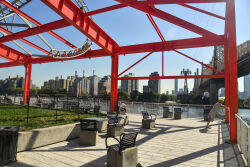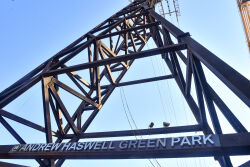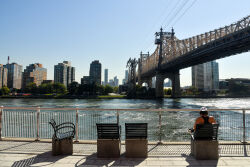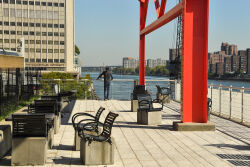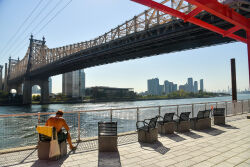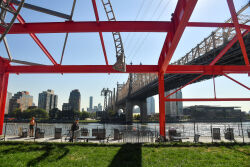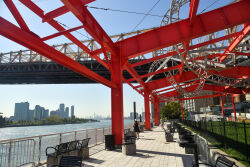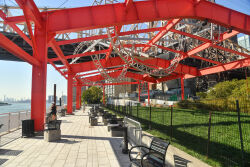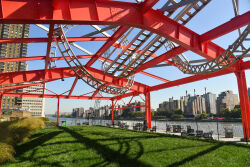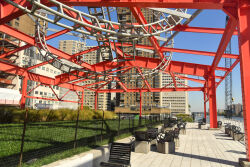Andrew Haswell Green Park
East River 60th Street Pavilion
This small pavilion, located at the intersection of York Avenue, Franklin D. Roosevelt Drive, East 60th Street, and East 61st Street in the Lenox Hill section of Manhattan, was built as part of the City’s 1980s waterfront revitalization program.
Originally farmland in the 1700s, this area attracted affluent New Yorkers who sought to escape the overcrowded conditions of Lower Manhattan. With urbanization creeping further uptown, recreational space for the riverside neighborhoods dwindled. When the Great Depression (1929-1939) hit New York, many struggling homeless families began occupying nearby vacant lots. However, within a decade, the economy and the entire stretch of East Side property was revitalized through the efforts of President Franklin D. Roosevelt (1882-1945) and Mayor Fiorello H. LaGuardia (1882-1947). Landscaping projects, extensive parkway development, and the creation of several recreational areas during the first few years of World War II (1939-1945) drastically transformed the area. During the construction of the Franklin D. Roosevelt Drive, also known as “The FDR” and “The East River Drive,” the City developed the area’s vacant lots and riverfront property into much needed park space and beautiful riverside promenades.
During the 1980s, with the highest Manhattan neighborhood population density and the lowest proportion of parkland in the City, many community groups began lobbying the City for the creation of a new park in the neighborhood of Lenox Hill. Responding to the community’s concerns, when the decades old Department of Sanitation waste transfer station was relinquished in 1985, Parks moved into the 60th Street waterfront area to begin upgrading the site. With $2.1 million in funding provided by New York Hospital, Rockefeller University, and the Hospital for Special Surgery as part of their obligation for the use of their heliport’s air rights over the FDR, Parks removed the exterior and gutted the site’s previously utilized building. Keeping the lattice-like steel superstructure intact, Parks repaved and fenced-in the area, laid down brown tiles, and installed light blue benches and decorative rails reminiscent of ship railings. On May 12, 1994, at a gathering of 125 New Yorkers, Commissioner Stern opened the airy 12,000-square-foot riverfront porch. At the event the nearby supporting hospitals presented Commissioner Stern with a banner-sized check representing their $1.5 million endowment for future maintenance at the site.
In 1995, Alice Aycock’s East River Roundabout sculpture, a massive aluminum helix, was attached to the skeletal roof supports of the former waterfront garbage transfer station. Inspired by the weightlessness of Fred Astaire’s dancing, the spiral form, charged with a kinetic energy reminiscent of a roller coaster, the piece is her response to the clamorous visual environment of the Queensboro Bridge, FDR Drive, the heliport, and commercial river activity which envelope the plaza.
Check out your park's Vital Signs
Clean & Safe
Green & Resilient
Empowered & Engaged Users
Share your feedback or learn more about how this park is part of a
Vital Park System

